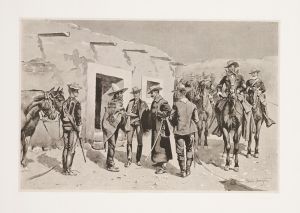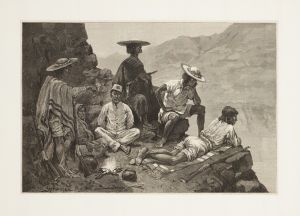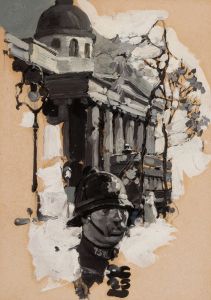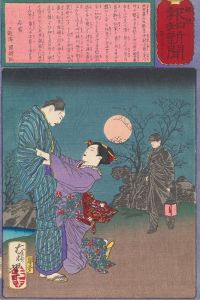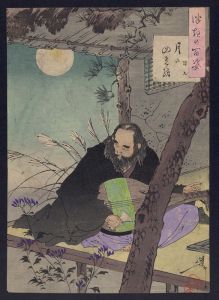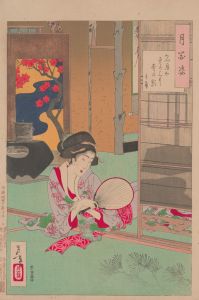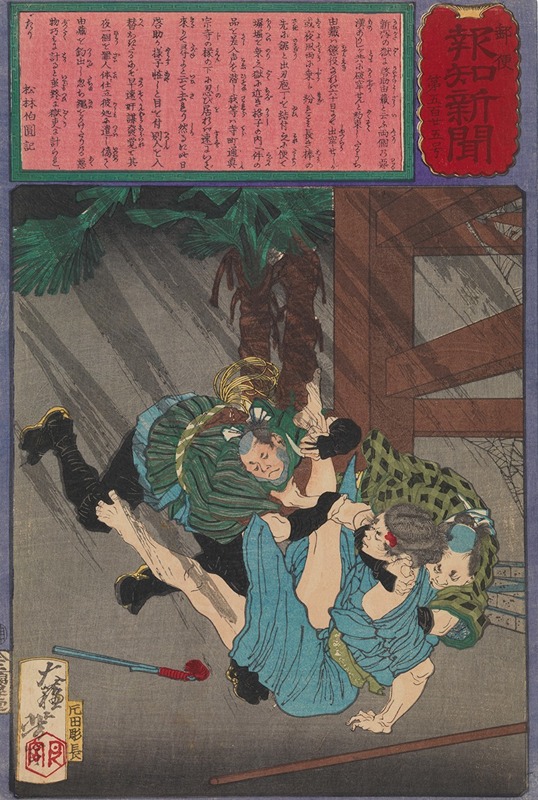
Guards Subdue the Prisoner Yoshizō after His Attempted Jailbreak
A hand-painted replica of Tsukioka Yoshitoshi’s masterpiece Guards Subdue the Prisoner Yoshizō after His Attempted Jailbreak, meticulously crafted by professional artists to capture the true essence of the original. Each piece is created with museum-quality canvas and rare mineral pigments, carefully painted by experienced artists with delicate brushstrokes and rich, layered colors to perfectly recreate the texture of the original artwork. Unlike machine-printed reproductions, this hand-painted version brings the painting to life, infused with the artist’s emotions and skill in every stroke. Whether for personal collection or home decoration, it instantly elevates the artistic atmosphere of any space.
Tsukioka Yoshitoshi (1839–1892) was a prominent Japanese ukiyo-e artist, known for his innovative and dynamic woodblock prints. One of his notable works is "Guards Subdue the Prisoner Yoshizō after His Attempted Jailbreak," which is part of his series "Tsuki hyakushi" (One Hundred Aspects of the Moon). This series, created between 1885 and 1892, is celebrated for its exploration of historical and mythical themes, often incorporating elements of drama and emotion.
"Guards Subdue the Prisoner Yoshizō after His Attempted Jailbreak" depicts a dramatic scene involving a prisoner named Yoshizō. The artwork captures the moment when guards overpower Yoshizō following his attempted escape from confinement. Yoshitoshi's portrayal of this event is marked by his characteristic attention to detail and ability to convey intense emotion through the expressions and postures of the figures involved.
The print is notable for its use of color and composition, which are typical of Yoshitoshi's mature style. The dynamic arrangement of the figures and the tension in their interactions reflect the dramatic nature of the scene. Yoshitoshi's skillful use of line and shading adds depth and movement to the composition, drawing the viewer into the narrative.
Yoshitoshi's work often reflects the social and cultural changes occurring in Japan during the Meiji period (1868–1912), a time of rapid modernization and Western influence. His prints frequently explore themes of conflict, both physical and psychological, and the tension between tradition and modernity. In this context, "Guards Subdue the Prisoner Yoshizō after His Attempted Jailbreak" can be seen as a reflection of the broader societal struggles of the time.
The "Tsuki hyakushi" series, to which this print belongs, is one of Yoshitoshi's most acclaimed works. Each print in the series is inspired by a story or legend associated with the moon, a motif that holds significant cultural and symbolic meaning in Japanese art and literature. The moon often represents beauty, mystery, and the passage of time, themes that resonate throughout Yoshitoshi's work.
Yoshitoshi's influence on the art world extends beyond his lifetime, as his innovative techniques and storytelling continue to inspire artists and art enthusiasts. His ability to blend traditional ukiyo-e methods with new ideas and themes helped to revitalize the genre during a period of decline. Today, his works are highly valued for their artistic merit and historical significance.
"Guards Subdue the Prisoner Yoshizō after His Attempted Jailbreak" exemplifies Yoshitoshi's mastery of the woodblock print medium and his ability to capture the complexities of human emotion and experience. Through this work, Yoshitoshi invites viewers to engage with a moment of high drama and consider the broader implications of the story within the context of Japanese history and culture.





